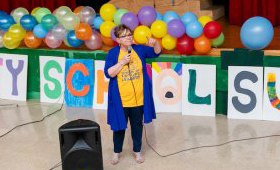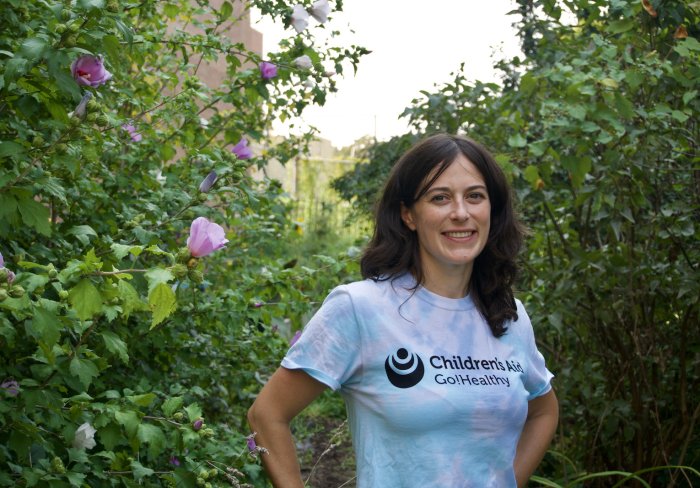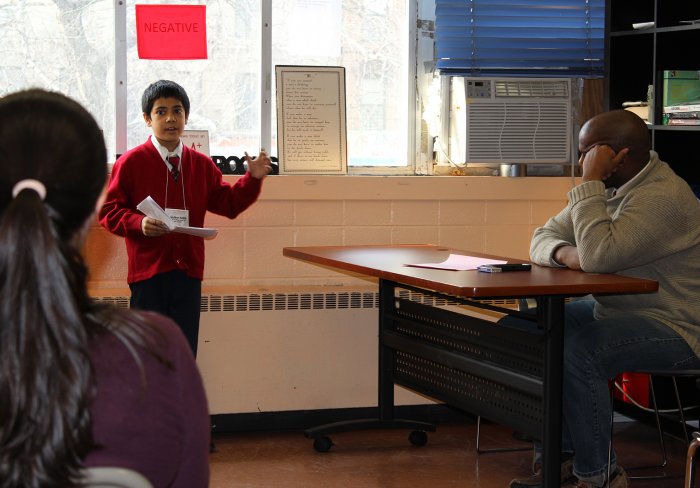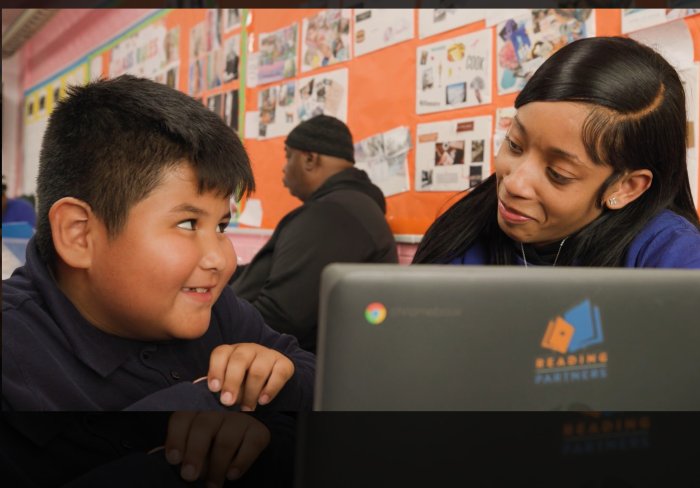When the White House calls, you pick up the phone. And Children’s Aid feels very fortunate that the White House called earlier this year.
First Lady Michelle Obama launched the Reach Higher Initiative to “inspire every student in America to take charge of their future by completing their education past high school, whether at a professional training program, a community college, or a four-year college or university.” Last week, the initiative staged a panel called Beating the Odds to focus on programs and strategies that had documented success in helping young people in challenging neighborhoods achieve. And community schools had a seat in the front of the room.
Jane Quinn represented Children’s Aid and the National Center for Community Schools. She brought with her Jeff Palladino, the principal at Fannie Lou Hamer Freedom High School, where we have operated a community school for several years, and one of his former students and current Children’s Aid employee, Elvis Santana.
In the words of Jane, “Children’s Aid was all over the room.” Elvis told his personal story about how staff at Fannie Lou diverted him from a life that might have involved gangs and drugs and gone very wrong. Instead, he is a graduate of Albert Magnus College in Connecticut.
David Kirp, a professor of public policy at University of California, Berkeley, and regular contributor to the New York Times, talked about our long-term experience in community schools as he moderated the panel that Jane sat on.
“The Obama Administration understands that schools cannot succeed on their own,” said Jane the day after the event. “Schools need to engage community-based organizations like ours. One thing that really came through was the importance of confident, caring adults. Mentors, role models, internships, that came through in every story we heard.”
As one might expect, there was significant media interest in the visit. DNAinfo ran a strong piece in anticipation of the visit and News 12 Bronx visited Fannie Lou the day after everyone returned from our nation’s capital, ending another significant moment for the community school strategy.







